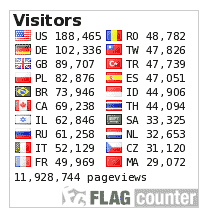YouTube Channel: An Alternative Social Media to Enhance EFL Students’ Speaking Skill
Keywords:
YouTube channel, Social media, Teaching speakingAbstract
The aim of this study is to know wether there is or not significant effect of using YouTube channel to students’ speaking skill. The use of YouTube channel can make easier for students to receive lessons, motivate students in learning, so what is the purpose of education can be achieved well. YouTube encourages positive learning attitude if it is incorporated in classroom teaching to supplement language learning especially speaking. The design of this study is experimental research that was conducted at English language study program of Universitas Islam Riau. The sample consist of 48 students from the first semester. After applying YouTube channel in learning, the results of the study showed a significant improvement. Based on the data of SPSS, the value of sig. (2-tailed) was 0,000 which is not greater than the probability value of 0.05. (0.000 < 0.05). It can be concluded that Ho is rejected and H1 is accepted, means that there is significant effect of using YouTube channel towards students’ speaking skill.
Downloads
References
Ataei, E. 2012. Using YouTube Videos to Teach Negotiation Skills in English Language Learning Master Dissertation. Malaysia: University Teknologi Malaysia.
Bonk, C. J. 2008. YouTube anchors and enders: The use of shared online video content as a macrocontext for learning.
Brown, H. Douglas. 2000. Principles of Language Learning and Teaching. (third edition). New Jersey: Prentice Hall.
Burke, S. C., & Snyder, S. L. 2008. YouTube: An Innovative Learning Resource for College Health Education Courses. International Electronic Journal of Health Education, 11, 39-46.
Cakir, I. 2006. The Use of Audio-Visual Material in Foreign Language Teaching Classroom. The Turkish Online Journal of Educational Technology, 4(5), 67-72.
Cameron. 2001. Teaching Languages to Young Learners. Cambridge. Cambridge University Press.
Chastain, Kenneth. 1988. Developing Second Language Skills: Theory and Practice 3rd edition. San Dieago: Harcourt Brace Jovanovich.
Creswell, J. W. 2008. Educational Research: Planning, Conducting, and Evaluating Quantitative and Qualitative Research. New Jersey: Pearson Education.
Cryer, P. & Elton, L. 1992. Active Learning in Large Classes and with Increasing Student Numbers (Sheffield: CVCP Staff Development Unit).
Cyril. J. 1988. Communicative Language Testing. New York: Prentice Hall.
Downes, S. 2008. Places to Go: YouTube. Innovate: Journal of Online Education, 4(5), 1-4. Retrieved from http://www.innovateonline.info/index.php?view=article&id=633
Duffy, P. a. B., Axel. 2006. The Use of Blogs, Wikis and RSS in Education: A Conversation of Possibilities. Paper presented at the In Proceedings Online Learning and Teaching Conference Brisbane.
Evans, C. 2014. Twitter for teaching: Can social media be used to enhance the process of learning? British Journal of Educational Technology, 45, 902-915. doi:10.1111/bjet.12099
Garcia-Barriocanal, E., Sicilia, M.-A., Sanchez-Alonso, S., & Lytras, M. 2011. Semantic Annotation of Video Fragments as Learning Objects: A Case Study with "YouTube" Videos and the Gene Ontology. Interactive Learning Environments, 19(1), 25-44.
Gaytan, J. 2013. Integrating social media into the learning environment of the classroom: Following social constructivism principles. Journal of Applied Research for Business Instruction, 11(1), 1.
Gibbs, J. 1997. Tribes: A New Way of Learning Together. Sausalito, CA: Center Source System.
Grauberg, Walter. 1997. The Elements of Foreign Language Teaching. Clevedon: Multilingual Matters, Ltd.
Harmer, J. 2005. The Practice of English Language Teaching. England: Longman.
Jalaluddin, M. 2016. Using YouTube to Enhance Speaking Skills in ESL Classroom. English for Specific Purposes World, 17(50).
Kaplan Andreas M., Haenlein Michael. 2010. "Users of the world, unite! The challenges and opportunities of social media". Business Horizons 53 (1). p. 61.doi:10.1016/j.bushor.2009.09.003.
Khalid Al-zyoud & Muhammad Kabilan 2012. The Use of YouTube in Teaching English Literature The Case of Al-Majma'ah Community College, Al-Majma'ah University (Case Study). International Journal of Linguistics ISSN 1948-5425 2012, Vol. 4, No. 4.
McKeachie, W. J. 1994. Teaching tips: A guidebook for the beginning college teacher, 9th ed. Lexington, MA: D, C. Heath.
Putra, Seno H. 2014. Cara-cara Penulisan Karya Ilmiah Populer dan Karya Ilmiah Akademik: Koran, Majalah, Makalah, Skripsi, Tesis dan Disertasi. Universitas Riau Press.
Riswandi, Diki. 2016. Use of YouTube-Based Videos to Improve Students’ Speaking Skill. Proceeding The 2nd International Conference On Teacher Training and Education Sebelas Maret University Volume 2 Number 1 2016 ISSN: 25002 – 4124
Rivers, W. 1987. Interactive Language Teaching. Cambridge: Cambridge University Press.
Rouse, Margaret. 2019. How SAP is handling the social media explosion. Retrieved from https://whatis.techtarget.com/definition/social-media
Snelson, C., & Perkins, R. A. 2009. From Silent Film to YouTube™: Tracing the Historical Roots of Motion Picture Technologies in Education.
Suharsimi Arikunto. 2010. Prosedur Penelitian: Suatu pendekatan praktik. Jakarta: Rineka Cipta.
Terantino, J. M. 2011. Emerging Technologies YouTube for foreign languages: You have to see this video. Language Learning & Technology, 15(1), 10-16.
Thelen, H.A. 1960. Education and the Human Quest. New York: Harper and Row.
Thornbury, Scott. 1994. How to teach speaking. Longman, Kanisius: Kesainc Blanc.
Ur, Penny. 1996. A Course in Language Teaching Practice and Theory. Cambridge: Cambridge University Press.
Published
How to Cite
Issue
Section
This is an open-access article distributed under the terms of the Creative Commons Attribution-ShareAlike 4.0 International License which permits unrestricted use, distribution, and reproduction in any medium. Users are allowed to read, download, copy, distribute, search, or link to full-text articles in this journal without asking by giving appropriate credit, providing a link to the license, and indicating if changes were made. All of the remixes, transform, or build upon the material must distribute the contributions under the same license as the original.











